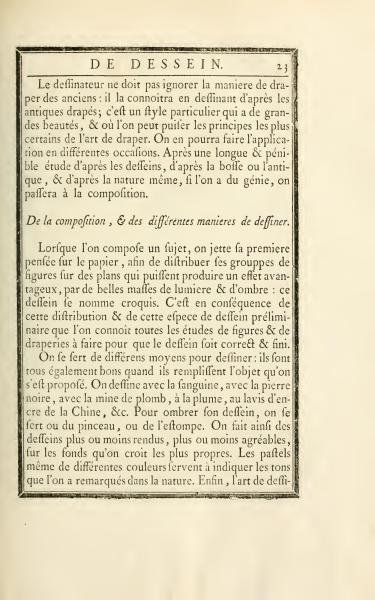ON DRAWING
The draftsman should not be ignorant of the ancient methods of draping: he will come to know it by drawing after antique draperies; it is a particular style that has great beauties and from which one can draw the most certain principles of the art of draping. One could apply it in different occasions. After a long and arduous study from sketches, from the boëte (note: likely an artist's box or model reference) or the antique, and even from nature itself, if one has genius, one will progress to composition.
On Composition, and Different Ways of Drawing.
When composing a subject, one casts their first thought on paper, in order to arrange the groups of figures on planes that can produce an advantageous effect, with beautiful masses of light and shadow: this design is called a sketch. It is from this distribution and this type of preliminary design that one understands all the studies of figures and draperies necessary for the drawing to be correct and finished.
Various means are used for drawing: they are all equally good when they achieve the intended object. One draws with red chalk, with black stone, with graphite, with a pen, with ink wash from China, etc. To shade the drawing, one uses either a brush or a stump. In this way, drawings become more or less detailed, more or less pleasing, on backgrounds deemed most suitable. Even pastels in different colors are used to indicate the tones observed in nature. Finally, the art of drawing...
Translation Notes
Boëte: Possibly refers to an artist's box or a specific kind of model or reference.
The text discusses the importance of understanding ancient draping techniques and applying them in art. It emphasizes the value of initial sketches and the arrangement of figures to create effective compositions through light and shadow. Different drawing tools and methods are mentioned, including the use of chalk, graphite, ink, and pastels to capture natural tones.
